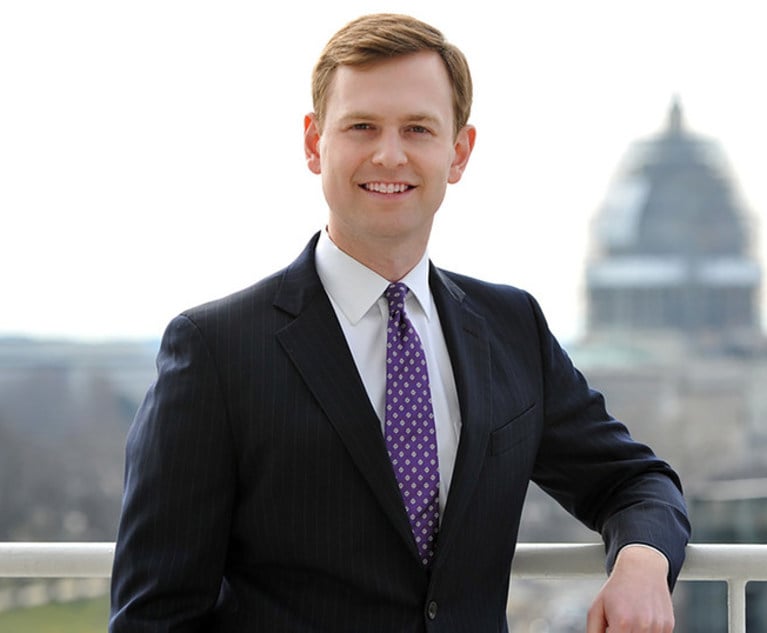Court tosses hospital’s challenge to NLRB Health Care Rule
The case had "zero merit," the court wrote
December 20, 2012 at 07:00 PM
21 minute read
The D.C. Circuit recently criticized a hospital's challenge to a rule that the National Labor Relations Board (NLRB) promulgated more than two decades ago.
In 1989, the NLRB created the Health Care Rule to limit the number and types of bargaining units that are allowed in acute-care facilities. “The whole idea was to avoid proliferation of bargaining units on the grounds that if there were too many small units within a hospital, it could lead to more labor disputes, strikes and work interruptions—and thereby hurt patients,” says Bernard Jeweler, a shareholder at Ogletree Deakins and former assistant general counsel at the NLRB.
In the rule, which the Supreme Court upheld in 1991, the board outlined eight possible appropriate bargaining units: all registered nurses; all physicians; all professionals except for registered nurses and physicians; all technical employees; all skilled maintenance employees; all business office clerical employees; all guards; and all nonprofessional employees except for technical employees, skilled maintenance employees, business office clerical employees and guards. The rule noted that combinations of these units could be appropriate if a labor organization sought them.
In 2007, the National Union of Hospital and Healthcare Employees petitioned for an election at San Miguel Hospital Corp., an acute-care facility in Las Vegas, N.M. The election concerned the formation of a bargaining unit comprising all on-site professionals and nonprofessionals, excluding the guards.
“That's a big unit,” says Denise Keyser, a partner at Ballard Spahr. “The hospital was probably not that happy with that. If a unit includes just the nurses or the other professionals, there aren't as many limitations on the employer's discretion. The hospital was facing a situation where it really wouldn't have been able to make any changes to terms and conditions of employment anywhere until it dealt with this union.”
San Miguel objected to the unit. But more importantly, it claimed the Health Care Rule violated a provision of the National Labor Relations Act (NLRA) that prohibits the board from using “the extent to which the employees have organized” as the controlling factor in determining a unit.
Nonetheless, the board's regional director found the proposed unit to be appropriate and approved an election. The union prevailed. San Miguel filed 24 objections to the election and refused to bargain with the union. The NLRB issued an order holding that San Miguel had violated the NLRA, and the case moved on to the D.C. Circuit for review. On Nov. 2, 2012, in San Miguel Hospital Corp. v. National Labor Relations Board, the court threw out the hospital's challenge.
Harsh Words
The D.C. Circuit wasn't gentle in tossing San Miguel's case. In the opinion, Judge Laurence Silberman wrote that the court saw “zero merit” to the hospital's argument that the Health Care Rule violated the NLRA. He said that although the NLRA stipulates that the extent of employees' organization cannot be the controlling factor in determining a unit, “consideration of that factor among others is entirely appropriate.”
Silberman wrote that although the hospital had “unleashed a blizzard of arguments to challenge the Board's unfair-labor-practice orders,” it “might be appropriate to suggest that in appellate argument, the proverbial rifle is preferable to a machine gun—but that would assume petitioner had at least a few good arguments; it did not. In truth, it appears to us that all the Hospital sought was the inevitable delay that review of Board orders affords.”
The court stopped just short of calling the appeal frivolous, Jeweler says. “There are board cases over the years in which the courts have been so aggravated … that they've slapped the private counsel with attorneys' fees awards in favor of the board,” he adds. “The court didn't do that here, but you can see that it looks like they were thinking about it.”
Think Twice
Experts say there are several lessons that counsel can take away from San Miguel.
“In-house counsel need to look closely to make sure their argument isn't going to turn the court against the client,” Jeweler says. “I would never want to be in a position where I've advised my client to litigate something to the point where the court ridicules it.”
Another takeaway stems from the fact that San Miguel waited until the D.C. Circuit heard the case to argue that the proposed bargaining unit was inappropriate because there was no community of interest within the group. The court said San Miguel needed to raise this issue in the initial representation hearing in order for the board to rule on it. The court wrote that the proposition “that the employer must challenge a proposed unit on community-of-interest grounds before the Board is required to rule on the issue” is “painfully obvious,” making a remand unnecessary. The lesson here is to “make sure you join all of the issues that you possibly want to litigate at the initial stages of the case,” says Jackson Lewis Partner Jeffrey Corradino.
Overall, experts say that San Miguel reminds in-house counsel at acute-care facilities that even though the Health Care Rule outlines eight specific appropriate bargaining units, the board may allow any combination of those. “You need to be prepared for the possibility that the union may not just target one specific group,” says Corradino.
Corradino suggests counsel at acute-care facilities try to structure their organization so that employees don't want or need union representation. Counsel should partner with human resources and ask themselves whether their organizations are paying competitively and listening to employees' legitimate concerns. “Then there really is no need to have a third-party organization come in and muck up the works,” he says.
The D.C. Circuit recently criticized a hospital's challenge to a rule that the National Labor Relations Board (NLRB) promulgated more than two decades ago.
In 1989, the NLRB created the Health Care Rule to limit the number and types of bargaining units that are allowed in acute-care facilities. “The whole idea was to avoid proliferation of bargaining units on the grounds that if there were too many small units within a hospital, it could lead to more labor disputes, strikes and work interruptions—and thereby hurt patients,” says Bernard Jeweler, a shareholder at
In the rule, which the Supreme Court upheld in 1991, the board outlined eight possible appropriate bargaining units: all registered nurses; all physicians; all professionals except for registered nurses and physicians; all technical employees; all skilled maintenance employees; all business office clerical employees; all guards; and all nonprofessional employees except for technical employees, skilled maintenance employees, business office clerical employees and guards. The rule noted that combinations of these units could be appropriate if a labor organization sought them.
In 2007, the National Union of Hospital and Healthcare Employees petitioned for an election at San Miguel Hospital Corp., an acute-care facility in Las Vegas, N.M. The election concerned the formation of a bargaining unit comprising all on-site professionals and nonprofessionals, excluding the guards.
“That's a big unit,” says Denise Keyser, a partner at
San Miguel objected to the unit. But more importantly, it claimed the Health Care Rule violated a provision of the National Labor Relations Act (NLRA) that prohibits the board from using “the extent to which the employees have organized” as the controlling factor in determining a unit.
Nonetheless, the board's regional director found the proposed unit to be appropriate and approved an election. The union prevailed. San Miguel filed 24 objections to the election and refused to bargain with the union. The NLRB issued an order holding that San Miguel had violated the NLRA, and the case moved on to the D.C. Circuit for review. On Nov. 2, 2012, in San Miguel Hospital Corp. v. National Labor Relations Board, the court threw out the hospital's challenge.
Harsh Words
The D.C. Circuit wasn't gentle in tossing San Miguel's case. In the opinion, Judge Laurence Silberman wrote that the court saw “zero merit” to the hospital's argument that the Health Care Rule violated the NLRA. He said that although the NLRA stipulates that the extent of employees' organization cannot be the controlling factor in determining a unit, “consideration of that factor among others is entirely appropriate.”
Silberman wrote that although the hospital had “unleashed a blizzard of arguments to challenge the Board's unfair-labor-practice orders,” it “might be appropriate to suggest that in appellate argument, the proverbial rifle is preferable to a machine gun—but that would assume petitioner had at least a few good arguments; it did not. In truth, it appears to us that all the Hospital sought was the inevitable delay that review of Board orders affords.”
The court stopped just short of calling the appeal frivolous, Jeweler says. “There are board cases over the years in which the courts have been so aggravated … that they've slapped the private counsel with attorneys' fees awards in favor of the board,” he adds. “The court didn't do that here, but you can see that it looks like they were thinking about it.”
Think Twice
Experts say there are several lessons that counsel can take away from San Miguel.
“In-house counsel need to look closely to make sure their argument isn't going to turn the court against the client,” Jeweler says. “I would never want to be in a position where I've advised my client to litigate something to the point where the court ridicules it.”
Another takeaway stems from the fact that San Miguel waited until the D.C. Circuit heard the case to argue that the proposed bargaining unit was inappropriate because there was no community of interest within the group. The court said San Miguel needed to raise this issue in the initial representation hearing in order for the board to rule on it. The court wrote that the proposition “that the employer must challenge a proposed unit on community-of-interest grounds before the Board is required to rule on the issue” is “painfully obvious,” making a remand unnecessary. The lesson here is to “make sure you join all of the issues that you possibly want to litigate at the initial stages of the case,” says
Overall, experts say that San Miguel reminds in-house counsel at acute-care facilities that even though the Health Care Rule outlines eight specific appropriate bargaining units, the board may allow any combination of those. “You need to be prepared for the possibility that the union may not just target one specific group,” says Corradino.
Corradino suggests counsel at acute-care facilities try to structure their organization so that employees don't want or need union representation. Counsel should partner with human resources and ask themselves whether their organizations are paying competitively and listening to employees' legitimate concerns. “Then there really is no need to have a third-party organization come in and muck up the works,” he says.
This content has been archived. It is available through our partners, LexisNexis® and Bloomberg Law.
To view this content, please continue to their sites.
Not a Lexis Subscriber?
Subscribe Now
Not a Bloomberg Law Subscriber?
Subscribe Now
NOT FOR REPRINT
© 2025 ALM Global, LLC, All Rights Reserved. Request academic re-use from www.copyright.com. All other uses, submit a request to [email protected]. For more information visit Asset & Logo Licensing.
You Might Like
View All
Netflix Music Guru Becomes First GC of Startup Helping Independent Artists Monetize Catalogs
2 minute read
FTC Finalizes Child Online Privacy Rule Updates, But Ferguson Eyes Further Changes


Global Software Firm Trying to Jump-Start Growth Hands CLO Post to 3-Time Legal Chief
Trending Stories
- 1Who Are the Judges Assigned to Challenges to Trump’s Birthright Citizenship Order?
- 2Litigators of the Week: A Directed Verdict Win for Cisco in a West Texas Patent Case
- 3Litigator of the Week Runners-Up and Shout-Outs
- 4Womble Bond Becomes First Firm in UK to Roll Out AI Tool Firmwide
- 5Will a Market Dominated by Small- to Mid-Cap Deals Give Rise to a Dark Horse US Firm in China?
Who Got The Work
J. Brugh Lower of Gibbons has entered an appearance for industrial equipment supplier Devco Corporation in a pending trademark infringement lawsuit. The suit, accusing the defendant of selling knock-off Graco products, was filed Dec. 18 in New Jersey District Court by Rivkin Radler on behalf of Graco Inc. and Graco Minnesota. The case, assigned to U.S. District Judge Zahid N. Quraishi, is 3:24-cv-11294, Graco Inc. et al v. Devco Corporation.
Who Got The Work
Rebecca Maller-Stein and Kent A. Yalowitz of Arnold & Porter Kaye Scholer have entered their appearances for Hanaco Venture Capital and its executives, Lior Prosor and David Frankel, in a pending securities lawsuit. The action, filed on Dec. 24 in New York Southern District Court by Zell, Aron & Co. on behalf of Goldeneye Advisors, accuses the defendants of negligently and fraudulently managing the plaintiff's $1 million investment. The case, assigned to U.S. District Judge Vernon S. Broderick, is 1:24-cv-09918, Goldeneye Advisors, LLC v. Hanaco Venture Capital, Ltd. et al.
Who Got The Work
Attorneys from A&O Shearman has stepped in as defense counsel for Toronto-Dominion Bank and other defendants in a pending securities class action. The suit, filed Dec. 11 in New York Southern District Court by Bleichmar Fonti & Auld, accuses the defendants of concealing the bank's 'pervasive' deficiencies in regards to its compliance with the Bank Secrecy Act and the quality of its anti-money laundering controls. The case, assigned to U.S. District Judge Arun Subramanian, is 1:24-cv-09445, Gonzalez v. The Toronto-Dominion Bank et al.
Who Got The Work
Crown Castle International, a Pennsylvania company providing shared communications infrastructure, has turned to Luke D. Wolf of Gordon Rees Scully Mansukhani to fend off a pending breach-of-contract lawsuit. The court action, filed Nov. 25 in Michigan Eastern District Court by Hooper Hathaway PC on behalf of The Town Residences LLC, accuses Crown Castle of failing to transfer approximately $30,000 in utility payments from T-Mobile in breach of a roof-top lease and assignment agreement. The case, assigned to U.S. District Judge Susan K. Declercq, is 2:24-cv-13131, The Town Residences LLC v. T-Mobile US, Inc. et al.
Who Got The Work
Wilfred P. Coronato and Daniel M. Schwartz of McCarter & English have stepped in as defense counsel to Electrolux Home Products Inc. in a pending product liability lawsuit. The court action, filed Nov. 26 in New York Eastern District Court by Poulos Lopiccolo PC and Nagel Rice LLP on behalf of David Stern, alleges that the defendant's refrigerators’ drawers and shelving repeatedly break and fall apart within months after purchase. The case, assigned to U.S. District Judge Joan M. Azrack, is 2:24-cv-08204, Stern v. Electrolux Home Products, Inc.
Featured Firms
Law Offices of Gary Martin Hays & Associates, P.C.
(470) 294-1674
Law Offices of Mark E. Salomone
(857) 444-6468
Smith & Hassler
(713) 739-1250






